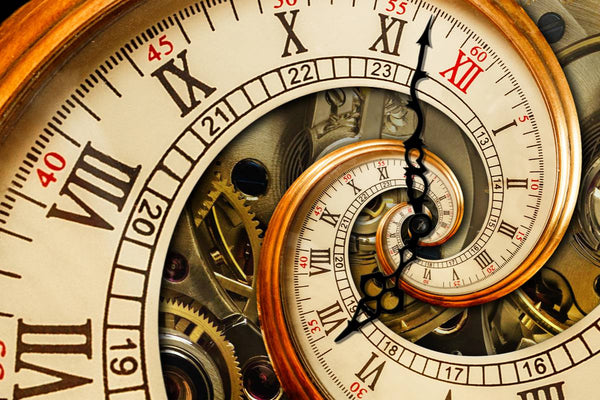In the world of contemporary art, certain artists stand out for their creativity, originality, and ability to arouse emotion. Bartholomew Manfredi
is one of those artists who has managed to captivate audiences with his unique work. In this article, we will explore the fascinating life and work of Bartholomew Manfredi, delving into his artistic journey, influences, and impact on the art world.

Born in a small town in northern Italy, Bartholomew Manfredi developed a passion for art at an early age. He studied fine arts at the Academy of Fine Arts in Milan, where he acquired the technical skills necessary to express his artistic vision. From the beginning of his career, Manfredi sought to push the traditional boundaries of art and explore new forms of expression.
Bartholomew Manfredi's artistic style is difficult to categorize, as it transcends conventions and combines different techniques. However, elements of abstraction, surrealism, and expressionism can be observed in his work. His paintings are often characterized by vivid colors, organic shapes, and dynamic compositions.
Manfredi's influences are manifold. He draws inspiration from both the great masters of classical art such as Caravaggio and Rembrandt, as well as contemporary art movements such as urban art and street art. This combination of varied influences gives his work a timeless and universal quality.
Bartholomew Manfredi's impact: Bartholomew Manfredi's work has been exhibited in numerous art galleries and museums around the world, attracting the attention of collectors and critics. His paintings have also been acquired by private collectors and are part of renowned collections.

What sets Manfredi apart from other contemporary artists is his ability to convey deep emotions through his works. His paintings captivate the viewer and invite them to reflect on universal themes such as love, loneliness, and the human condition.
Bartholomew Manfredi is a visionary artist who has created a unique artistic legacy. His innovative style and ability to evoke emotion make him one of the most remarkable contemporary artists of our time. Whether through his vibrant canvases or provocative installations, Manfredi continues to push the boundaries of art and inspire future generations of artists.
Bartholomew Manfredi's influence on the pocket watch
The first reference to the pocket watch dates back to 1462. In a letter from the Italian watchmaker Bartholomew Manfredi to the Marquis of Mantua, Federico Gonzaga, in which he offered him a pocket clock.

The pocket watch, once an iconic accessory of elegance and refinement, has undergone significant evolution over the centuries. Among the contemporary artists who have helped redefine the concept of the pocket watch, Bartholomew Manfredi occupies a unique place. His innovative artistic approach and exceptional talent have greatly influenced the design and aesthetics of these classic timepieces. In this dissertation, we will examine in detail Bartholomew Manfredi's influence on the pocket watch, exploring the key elements of his artistic style as well as the impact his work has had on this iconic accessory.
- Redefining the Aesthetic of the Pocket Watch : Bartholomew Manfredi introduced a revolutionary aesthetic to pocket watch design. Through his bold use of color, shape, and pattern, he transformed these classic timepieces into true works of art. Manfredi incorporated elements of his unique artistic style, combining abstraction, surrealism, and expressionism, to create pocket watch dials that captivate the eye and evoke emotion. Organic patterns, rich textures, and dynamic compositions became his trademarks, giving pocket watches an unparalleled artistic dimension and beauty.
- The use of innovative materials : By pushing the boundaries of watchmaking, Bartholomew Manfredi also influenced the use of innovative materials in pocket watch manufacturing. He introduced unconventional materials such as acrylic glass, precious metals, and even organic elements into pocket watch cases and dials. This bold use of materials resulted in the creation of unique pieces that combined traditional craftsmanship with contemporary elements. Manfredi's pocket watches thus became art objects in their own right, combining watchmaking precision with modern aesthetics.
- Narrative and Symbolic Dimension : One of Bartholomew Manfredi's most significant contributions to the pocket watch lies in his ability to imbue them with a narrative and symbolic dimension. Through his meticulously crafted dials, he tells visual stories, evokes emotions, and explores universal themes. Each Manfredi pocket watch is an invitation to reflection, a subtle blend of symbols and metaphors. The motifs on the dials can represent imaginary landscapes, abstract portraits, or atypical scenes.
- Bartholomew Manfredi's Enduring Legacy : Bartholomew Manfredi's influence on the pocket watch cannot be underestimated. His innovative artistic approach and willingness to push traditional boundaries opened new perspectives for this classic accessory. Watchmakers and designers have drawn inspiration from his work to create pocket watches that reflect his unique aesthetic. Storytelling elements, innovative materials, and artistic designs have become common features in many contemporary pocket watch models. Manfredi's legacy lives on through these creations, providing watch enthusiasts with unique and captivating pieces.

Conclusion : Bartholomew Manfredi left an indelible mark on the pocket watch thanks to his innovative artistic approach. His ability to redefine aesthetics, use innovative materials, and infuse these classic timepieces with narrative and symbolism transformed their perception. His legacy can be seen in contemporary pocket watches, where art and watchmaking come together to create unique and evocative pieces. Manfredi's influence will endure in the world of watchmaking, reminding everyone that the pocket watch is much more than a simple timekeeping instrument, but a work of art in its own right.

